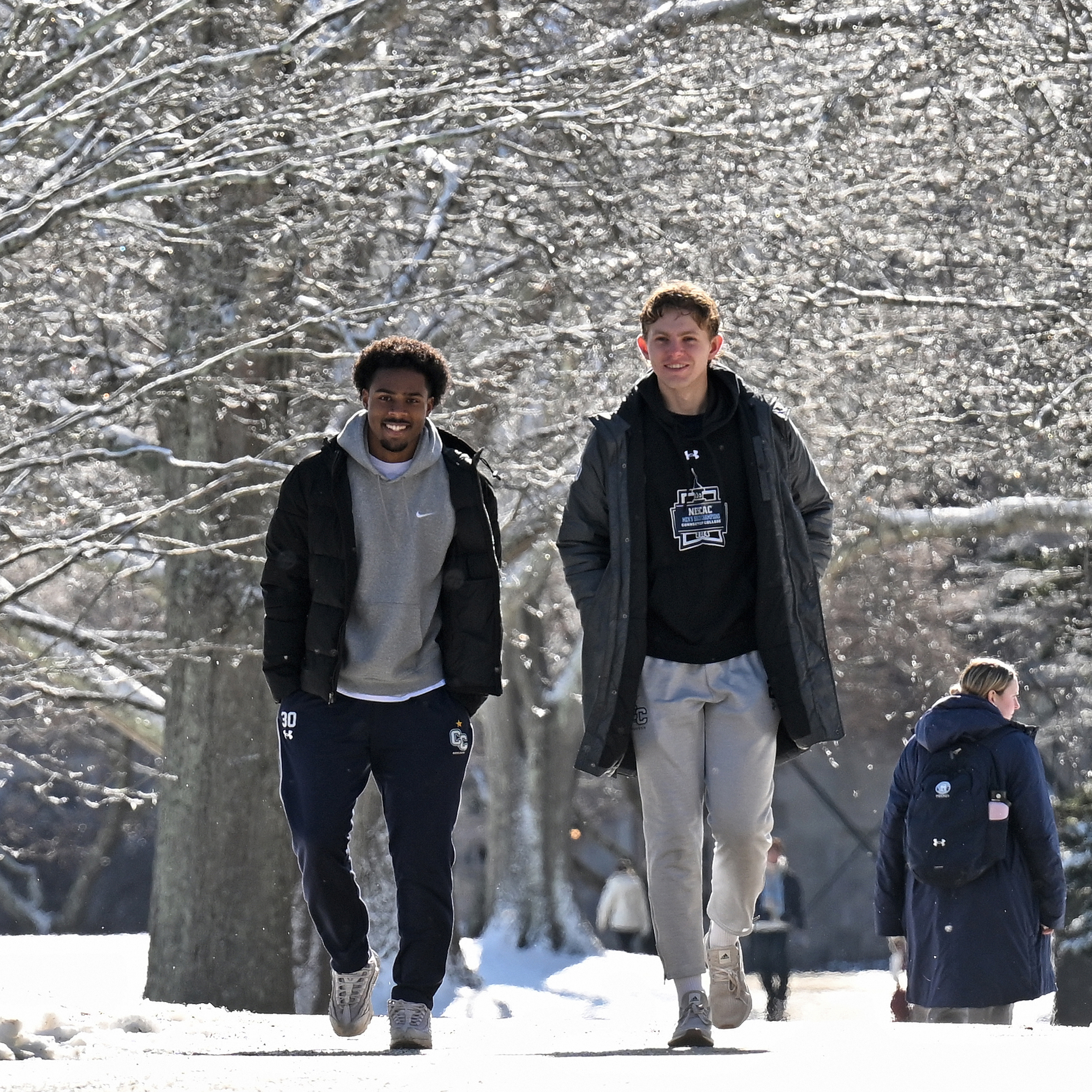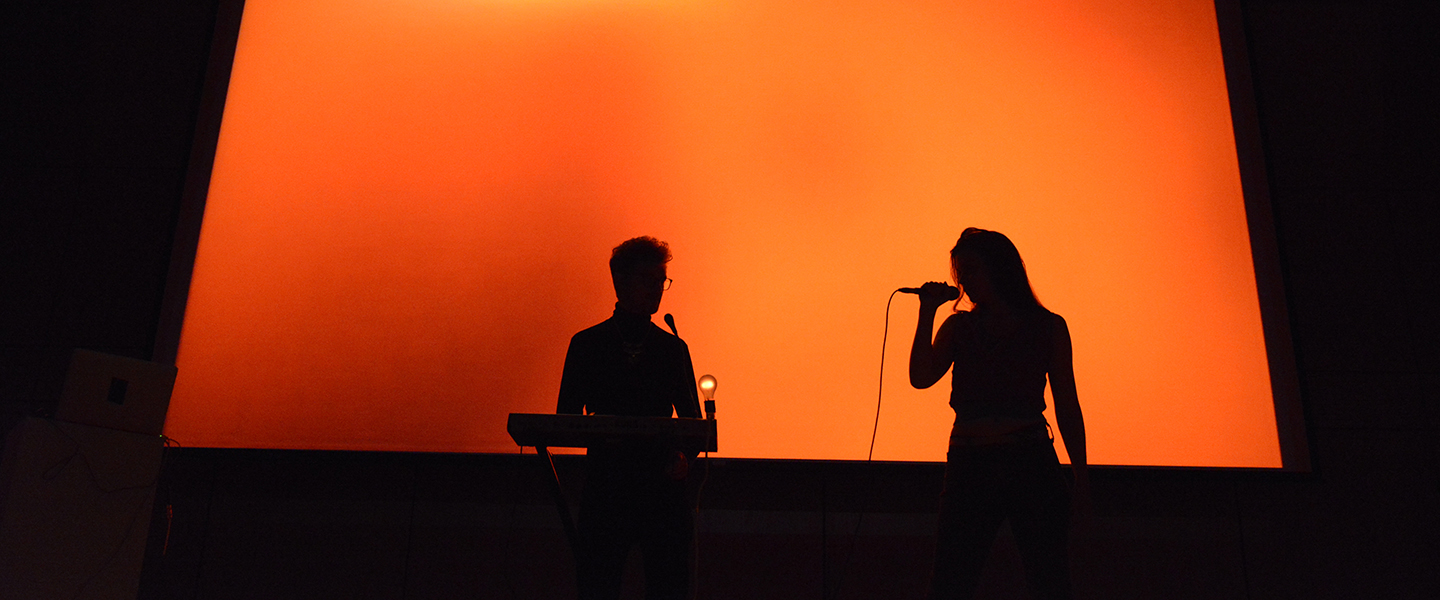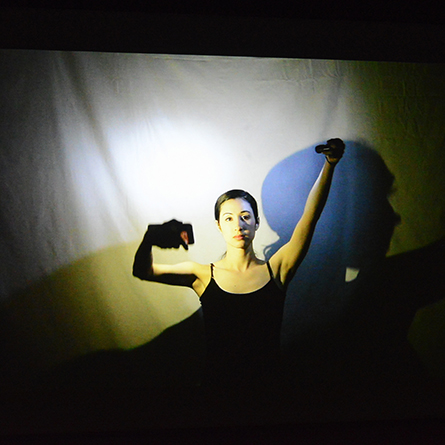
Intersections
A globally renowned artist known for projecting captivating images on prominent city structures. A Brooklyn-based filmmaker who excavates video clips from YouTube and cleverly stitches them together to create projects that offer biting social commentary.
These are only two examples of the nearly 100 innovators from an eclectic mix of disciplines who recently participated in Intersections: the 16th Biennial Ammerman Arts and Technology Symposium presented by Connecticut College.
For more than three decades, the event has provided a forum for artists and researchers from around the world to share ideas, performances and unique exhibitions of visual art with Conn students and faculty in a way that explores cultural issues through the lenses of art and technology.
This year’s symposium focused on the theme of social justice, and examined contemporary topics related to gender, race, economic inequality and the societal impacts of modern technology.
"We've been doing this symposium a long time, and it's important to be topical," said Andrea Wollensak, who serves as director of the Ammerman Center for Arts and Technology. "This year, we connected and planned extensively with the CCSRE (the College's Center for the Critical Study of Race and Ethnicity), and the idea was to explore and express ideas on race, class, power and social justice. How do artists and scholars and people not even connected to academic institutions explore these notions? And, also, how do they do so through technology and the arts?"
It’s tradition for a keynote speaker to be selected, and this year the Polish-born American artist Krzysztof Wodiczko, was chosen. Wodiczko has gained international fame for his iconic works of public art, including the piece, “Hirshhorn Museum, Washington D.C.,” an outdoor installation that projected a 68-foot image onto the exterior of the Hirshhorn Museum 30 years ago, and was recently restaged.
Libby Friedman, assistant director for the Ammerman Center, said Wodiczko was a perfect choice for this year’s keynote because of his history of addressing social issues such as gun violence and the death penalty.
"Wodiczko's work is amazing," Friedman said. "He gives priorities to those who've been least heard, and they're acknowledged in a very public way through an anti-representation of what a certain building or monument represents."
Beyond attending the various exhibitions, performances and discussions, students had the opportunity to actually work with artists and participate in installations. Several students also presented projects and received feedback from symposium participants.
Conn students weren’t the only beneficiaries of the diverse programming. One priority of the Ammerman Center was to ensure the local community felt welcomed as well, and the schedule was designed with no overlap, so people wouldn’t be forced to choose one particular event over another during the three-day symposium.
"We work very hard to make the event accessible," explained Friedman. "We see a lot of community members at the galleries and concerts, and this marks the third symposium where we've partnered with Hygienic Art in downtown New London. That's exciting. Plus, we have artists and dancers and composers taking part, and they have followings. We get people traveling from Boston or Washington, D.C., and New York to see them. And, of course, while they're here, they get to experience everything else that's going on."
Back on campus, Brooklyn film maker and video artist Natalie Bookchin has a featured exhibit at the Cummings Art Center through March 2, and also spoke during the symposium.
"Natalie’s work creates the modern equivalent of an ancient Greek chorus,” said Wollensak. “It's dramatic commentary on the misdeeds of the powerful."
Nadav Assor, assistant professor of expanded media and associate director of the Ammerman Center, said the focused nature of the event allowed participants to maintain a common theme throughout the course of the symposium, despite the diversity of fields and backgrounds.
“There was a real buzz in the air throughout the weekend with people rushing between events and constantly shifting gears,” Assor said. “Within a few hours, we moved from an artist talk about politics, to exploring video art, then on to a powerful live concert mixing dance, music and technology, to the closing Experimental Sound event at Tansil's black box theater. And, of course, it was exciting to engage with our own students, who received glowing responses from the participants. It was truly an exhilarating experience.”














